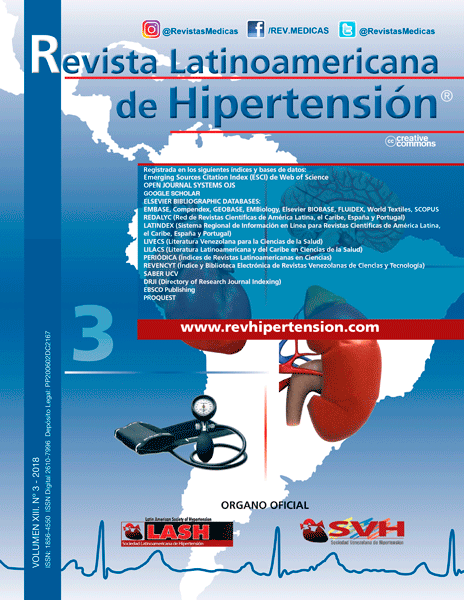Studying the relationship between the risk factors of cardiovascular diseases and carotid intima‐media thickness (CIMT) in renal patients undergoing hemodialysis admitted to Razi Hospital and Caspian Dialysis Center in Rasht, 2017
Palabras clave:
Ultrasonography, cardiovascular diseases, carotid artery, intima layer, media layer, hemodialysisResumen
The increase in CIMT is known as an early warningsign of atherosclerosis. CIMT examinationusing ultrasonography is a non-invasive, precise,and practical way to detect atherosclerosis. As cardiovasculardiseases are of the main causes of mortality in dialysispatients, this study tried to examine the relationshipbetween cardiovascular risk factors and CIMT in renal patientsundergoing hemodialysis.This case-control study was conducted on 60 hemodialysispatients and 60 non-dialysis patients at Razi Hospital andCaspian Diabetic Center in Rasht in 2017. After examiningthe risk factors of cardiovascular diseases, ultrasonographywas performed to measure CIMT. Finally, data were analyzedusing SPSS21 and appropriate statistical methods.Mean CIMT in dialysis patients (0.88 ± 0.16 mm) wassignificantly higher than the non-dialysis patients (0.69± 0.14 mm) (P<0.0001). Mean CIMT in terms of genderand smoking was statistically significant only in non-dialysispatients (P = 0.025 and 0.028, respectively). Age(P<0.0001, β = 0.004), gender (P<0.027, β = 0.05), systolicblood pressure (P = 0.024, P = 0.001) Body massindex (BMI) (P = 0.017, β = 0.005) and TG (P <0.0001,β = 0.002) were considered as factors related to CIMT.Moreover, CRP (P <0.0001, β = 0.132), intact parathyroidhormone (iPTH) (P <0.0001, β = 0.003) and Ca-P product(P = 0.023, P <0.001) 0 = β) were considered for havingthe most importance among the new generation of riskfactors associated with CIMT.The results showed that the mean CIMT in dialysis patientswas significantly higher than that of non-dialysis patients.Furthermore, age, gender, systolic blood pressure,BMI and TG had direct connection with CIMT. CRP, iPTHand Ca-P product were identified as the most importantnew generation risk factors for CIMT.Descargas
Los datos de descargas todavía no están disponibles.

